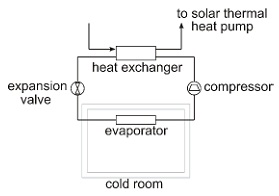Assignment:
Question 1
The Wivenhoe hydroelectric power station requires water to be pumped from Wivenhoe Dam to Splityard Creek Dam, using two pumps (each consuming 250 MW of power at 98% efficiency) to elevate the water approximately 70 m. At full power, Splityard Creek Dam can be filled from empty to its capacity of 28 700 ML in 14 hours. The water being supplied is stationary at 4 atm and 10°C; it is released at 1 atm through a pipe of 20 m diameter.
a) Assume that there will be no net heat transfer to the water. What is the maximum temperature at which the water will exit?
b) Discuss what processes could affect the outlet temperature of the water and provide estimates of how much the outlet temperature might be changed. You are not required to produce detailed calculations (these methodologies will be taught elsewhere), but give reasonable estimates (e.g. "decrease by about 5 degrees", "increase by about 10 degrees") with justifications for your directions and values.
Question 2
The Renewable Energy Refrigeration Facility (RERF) at USQ uses a vapour-compression refrigeration cycle operating with R134a as the working fluid to extract heat from a cold room at the rate of 4 kW. An illustrative diagram of the cycle is shown in Figure 1 The temperature of the air in the cold room is maintained at 4°C, and to enable the use of a moderate-sized evaporator, the temperature difference between the cold air and the refrigerant should be 10°C. In a conventional cycle, the condensation of the refrigerant would have to occur at 45°C to enable effective heat exchange with the outside air which is at a temperature of 30°C.
However, the advantage of the RERF cycle lies in the fact that the refrigerant condenses at a relatively low temperature of 25°C in a heat exchanger. In the RERF cycle the heat from the cold room is delivered via a counter-flow heat exchanger into a heat pump arrangement driven by solar-thermal energy.
The target operating condition requires 6°C of superheating on the inlet to the compressor as a margin for safety as we don't want any possibility of liquid entering the compressor. Sub-cooling of 3°C is specified for R134a at the end of the condensation process in the heat exchanger. The pipework connecting the components and the heat exchangers have been well sized so that we don't have to consider pressure changes in these devices when analysing the system.

(a) Determine the values of pressure and specific enthalpy at the entry and exit of the compressor, and at the entry and exit of the expansion device.
(b) Sketch a pressure-enthalpy diagram showing the cycle, with key points labelled, relative to the vapour dome.
(c) What refrigerant mass flow rate (expressed in kg/s) is required?
(d) Calculate the compressor power (kW), on the assumption that the compression process is isentropic.
(e) Determine the COP of the system.